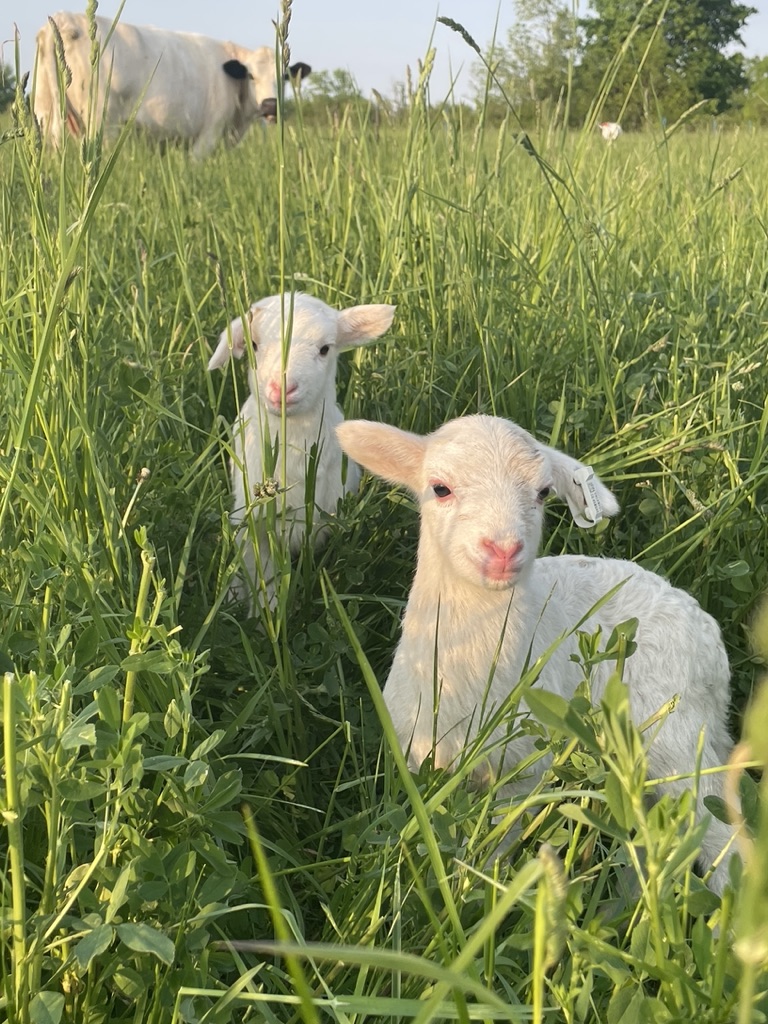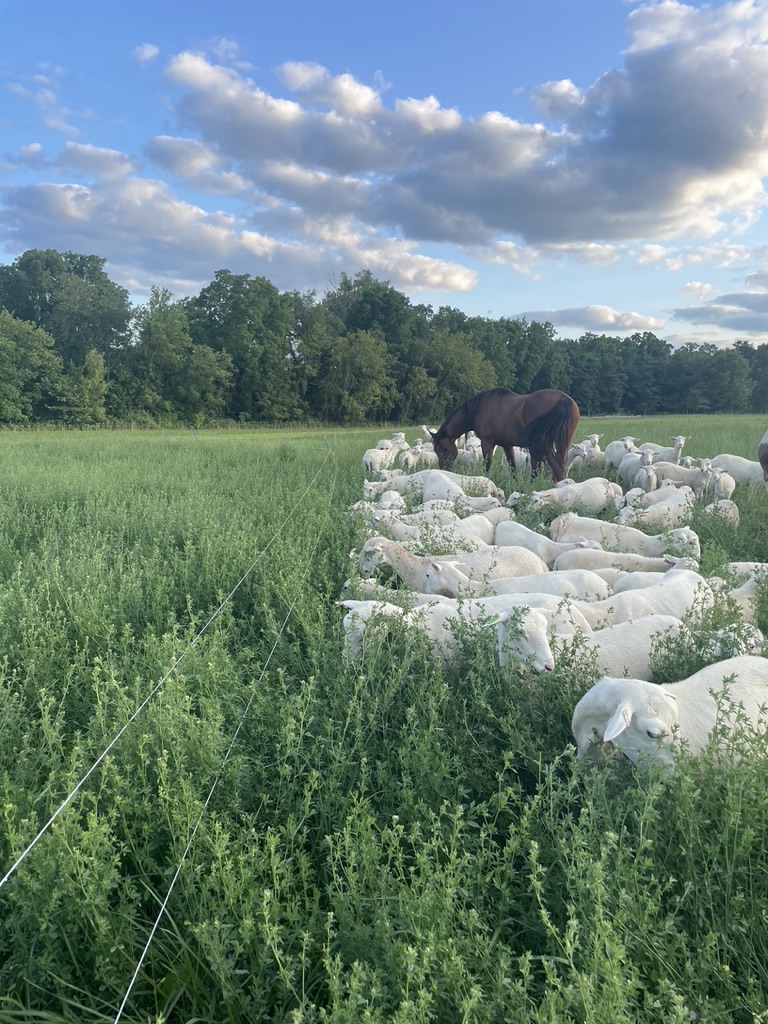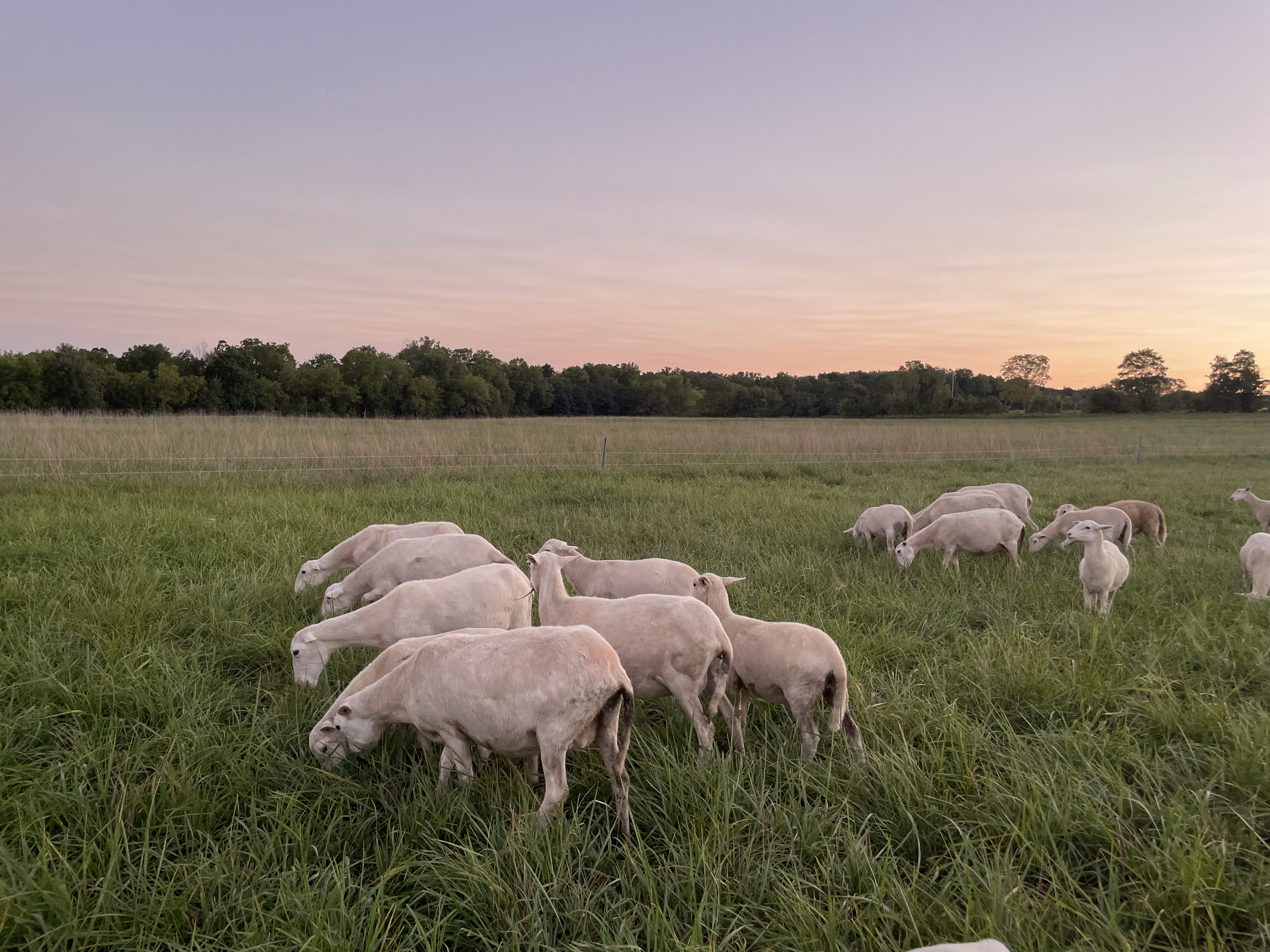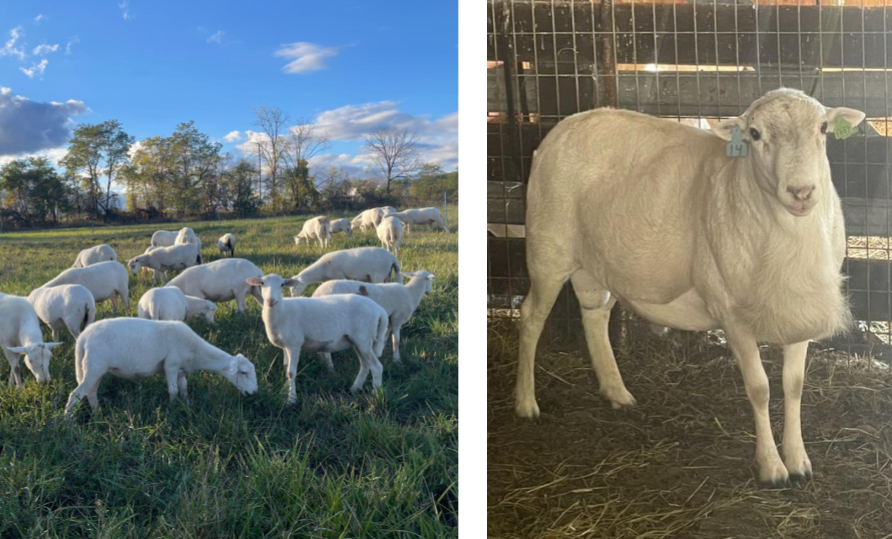

Building our Flock:
Almost unbelievably, our search for what would eventually become our grass-based flock of 100 sheep would personally involve two nationally known and highly sought-after grazers: Greg Judy of Green Pastures Farm and Abram Bowerman at Stillwaters Farm, both of Missouri. Ultimately, our first four foundational ewes, Shayla, Eileen, Mary and Annabel were all St. Croix hairsheep (hairsheep do not require shearing) and we then crossed those ewes with Grassmaster rams from Abram Bowerman. Our long search for this type of sheep to breed, raise and sell was worth it for the following reasons:
1. Grass-based.
Our sheep must thrive on grass alone. Our plan for Singing Hill Farm has always been that our sheep would help heal and tend the land, and the land in turn would fully tend to the sheep. By managing our pastures through rotational intensive grazing our flock can grow fat on grass alone and all of our sheep are trained to respect hotwires and to be moved daily.


2. Ease of lambing.
Almost all of our lambs are born in the early morning hours and we awake during lambing season to newborns on the grass nearly daily. Rarely, if ever have we had to intervene—which only adds stress to the sheep and exhaustion to the shepherd! We strive for low lambing weights and high weaning weights.
3. Highly parasite resistant.
Nearly all farms must run their sheep through what is called “drenching”, an orally administered de-worming insecticide once or more each year. This is both time-consuming for us as farmers, and stressful on the sheep. St. Croix, however, whose origins were in the tropical islands of the Caribbean, where intestinal worms can flourish year-round, developed a natural and rigorous parasite resistance and rarely any need de-worming. The Grassmaster line has only added great genetics for parasite resistance.


4. Great mothering instincts.
No matter what else we may hope that our sheep pass along genetically, none of those traits matter if the lambs are not first nursed and nurtured by their mothers. Even with first-time moms, these sheep almost invariably and instinctively turn and care for their lambs immediately and are great mothers.
Other than the rams that we have been selected for us by Abram,
we are now on the 3rd generation of Grassmaster rams from
Stillwaters Farm, our flock has been closed since the purchase
of the four foundational ewes. By mid-May of each spring our
flock begins its lambing, directly on pasture. We want our ewes
to be supported by rich, green grass, so they can adequately
support their lambs with nutrient-rich and abundant milk
production. Ewe lambs born in May, are bred in December of that
same year and they in turn lamb the following May, when they
turn 1 year old. The annual lambing rate for flock hovers near
the 200% mark—meaning if we have 50 ewes lambing, we will likely
end with near to 100 lambs. Most ewe lambs (those young females
lambing for the first time) nearly always have single lambs, but
some do have twins. The majority of the mature ewes in the flock
have twins, and the balance of mature ewes have triplets. This
brings us to a flock average of two lambs per ewe. At about 12
weeks of age we vaccinate all of the lambs, and select a number
of ram lambs to keep in-tact for possible sale as breeding rams,
and the others are made into wethers and will be sold at market
or to individuals for processing. We do not wean our lambs, we
let nature and the mothers determine when that happens.
Normally, ram lambs and ewe lambs for sale are ready to be
selected by late August or early September.